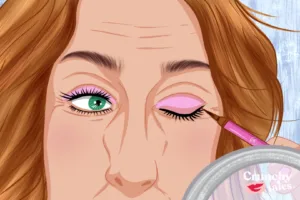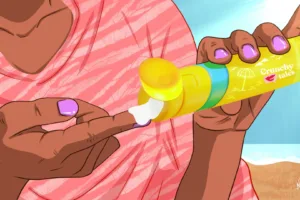The Humble Soap Bar strikes back
There is no doubt that beauty products can impact our environment in many negative ways. The harsh chemicals used in the manufacture of shampoos, shower creams and bubble baths all end up in the world’s oceans upsetting the status quo and endangering marine life.
Here at Crunchy Tales, we have been having a dig around to see how our impact can be reduced, and we have found that the humble bar of soap is undergoing a bit of a revival. With no wasteful plastic packaging, a soap bar keeps on giving and will outlast any bottle of your favourite shampoo or shower gel.
In the past, bars of soap have often been overlooked in favour of fancy shower gels, anti-bacterial liquid handsoap and moisturising facial cleaners. They were often branded as unhygienic and got a bad reputation for making skin feel tight and dry, but after a long-term decline, soap bars are now outperforming the market, with apothecary-style packaging, natural ingredients and minimalist brand names.
The ease of use that a bar of soap affords as well as increased consumer interest in organic products are key reasons why it is seeing a resurgence as of late.
Scented soaps might also be a kind of romantic choice: they evoke a rich, unique combination of personal memory and immediate physiological experience. But, very few people know that the bar hasn’t always smell as fragrant as it does today.
A brief history of soap
A soap-like material was discovered during the excavation of the ancient city of Babylon as far back as 2800 BC. From inscriptions found on clay pots, archaeologists learned that fats were boiled together with ashes, which is a renowned soap-making method that aids the separation of dirt from textiles.
The soap made back in 600 BC was made from goat’s tallow (animal fat) and wood ashes. And we all know that goats don’t exactly smell so nice, do they? The Romans found adding urine to the mixture made it a much more effective cleanser because the ammonium in the urine reacted with the oils and fat in woollens. It became a thriving business and people called ‘fullones’ traipsed the streets selling urine to soap-makers.
How soap production evolved
Spain and Italy were using goat fat to make soap bars in the 7th and a guild of soap-makers in Naples also existed at this time. The French, on the other hand, used olive oil, and Marseille soap has been made in the south of France for more than 600 years. King Louis XIV officially recognised the recipe in 1688 and then fragrances began to be introduced and products for bathing, shaving, shampooing and washing laundry began to be manufactured.
And across the Channel in 17th century England, King Charles I granted a 14-year monopoly to the Society of Soap-makers of Westminster. But it was heavily taxed, therefore expensive, and manufacture was strictly controlled. During Elizabeth’s I reign, soap consumption increased, although it’s thought she only took a bath once a month! The tax wasn’t repealed till 1853 when chemists found easier ways of mass producing soap bars and then it ceased being a luxury item. It wasn’t till after the First World War that soap was commercially produced on a massive scale and has evolved since then into a luxury and at times expensive item.
A soap revival
And since then, the beauty industry has been thriving and taken on monumental proportions. According to a recent survey, last year supermarket shoppers in Britain spent £68.3 million on barred soaps, up by 2.9 per cent from £66.4 million in the previous year.
From high street to high end, beauty brands are stepping up their soap games in a range of new and innovative ways becoming more natural and eco-friendly. With a wide-ranging selection of soaps on the shelf for a variety of different budgets and skin concerns, the choice out there might surprise you.
Now, you can also ditch those tiny plastic containers you’ve been lugging around in your wash bag every time you travel and try some of these solid self-contained shampoo bars, many of which are gentle on your hair and gently on your purse.
Here are our choices:
This handmade shampoo bar costs under a fiver and contains special oils designed to relieve skin complaints such as eczema and psoriasis.
Also fabulous value – the Natural Soap Company has three brands: chamomile and marigold, nettle and rosemary and tropical coconut. Each 100g bar costs only £4.50
Friendly soap’s lavender and geranium shampoo soap bar is a really good value at only £2.62. The bar contains the natural hair conditioner castor oil making it really nourishing and creamy.
Lush’s bar is more expensive at £15 a bar but many smaller cheaper bars are available in little round re-usable tins and catering to all hair types. They’re 100% vegetarian and against animal testing.
UK-based company Bain & Savon use only natural ingredients in their shampoo soap bars and they’re all suitable for vegans, free from preservatives, and no animal testing either. A big draw is that no palm oil is used.
Don’t forget that if you make the transition from traditional shampoo to a soap bar, your scalp and hair may need time to adapt. This could take a week or so and you may experience an excessively dry or oily scalp. Don’t worry and persevere as all will come good in the end. This happens because shampoos are full of chemicals and soap bars don’t strip your hair of all that natural sebum it needs.




